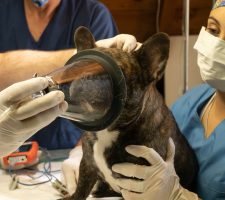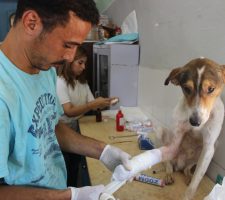As a dedicated pet owner, being prepared for emergencies is crucial for your pet’s health and well-being. In this guide, we’ll walk you through the steps to find reliable after-hours pet emergency care, ensuring you have peace of mind knowing help is available whenever you need it.
The Need for After-Hours Pet Emergency Care
Pet emergencies can happen at any time, often when regular veterinary offices are closed. Here, we’ll explain why having access to emergency vet services is an essential difference between regular vet visits and emergency care.
-
Common Scenarios Requiring Emergency Vet Services include poisoning, injuries, sudden illness, and severe allergic reactions.
-
Differences Between Regular Vet Visits and Emergency Care: Emergency care involves immediate, often life-saving treatment, whereas regular visits focus on preventative care and non-urgent medical issues.
Step-by-Step Guide to Finding Reliable After-Hours Pet Emergency Care
1. Research Local Clinics
Start by researching local clinics that offer after-hours services. Utilize online search tools and read reviews from other pet owners to compile a list of potential clinics.
-
Online Search and Reviews: Look for clinics with high ratings and positive feedback regarding their emergency services.
-
Proximity and Accessibility: Choose a clinic that is easily accessible from your home to ensure quick travel time in case of an emergency.
2. Verify Clinic Credentials and Services
Once you have a list of potential clinics, verify their credentials and the services they offer. This ensures that the clinic is equipped to handle emergencies effectively.
-
Qualifications and Certifications: Check for necessary accreditations like AAHA (American Animal Hospital Association) accreditation.
-
Services Offered: Confirm that the clinic provides comprehensive emergency vet services.
Essential Qualities of an Emergency Pet Clinic
1. Availability and Response Time
The availability and quick response time of a clinic is critical in emergencies.
-
24/7 Availability: Ensure the clinic operates around the clock, including holidays and weekends.
-
Contact Methods: Check if the clinic offers multiple contact methods such as phones, online chat, or emergency hotlines.
Example: If you’re considering a clinic, inquire about their specific emergency response procedures, like those in place at the Airport Pet Emergency Clinic vet surgery process.
2. Equipment and Facilities
The clinic should be equipped with modern medical technology to handle an array of emergencies.
-
Up-to-date Equipment: Ensure the clinic has advanced diagnostic tools like X-rays and ultrasound machines.
-
Specific Treatments and Surgeries: Check if the clinic offers specialized treatments and surgical procedures necessary in emergencies.
Making an Informed Decision
1. Scheduling a Pre-Visit
Visiting the clinic beforehand can give you a good sense of their environment and staff.
-
Benefits of Pre-Visit: Observing the clinic’s cleanliness, staff demeanor, and general atmosphere.
-
Evaluating Environment and Staff: Ensure the clinic feels welcoming and that the staff is professional and attentive.
2. Experienced Veterinary Staff
Experienced staff are crucial for effective emergency care. Their expertise can make a significant difference in critical situations.
-
Significance of Experienced Vets: Experienced vets are better prepared to diagnose and treat a wide range of emergencies quickly and accurately.
-
Benchmarks for Quality Care: Use standards, such as those demonstrated by experienced vets in Blountville, TN, to measure the clinic’s capabilities.
Local and Online Resources
1. Directories and Networks
Utilize reputable online directories and veterinary networks to find after-hours emergency clinics.
-
Online Directories: Websites like Yelp or specialized pet care directories can offer a list of vetted clinics.
-
How to Use Resources: Tips on effectively using these directories to find the best local options.
2. Community Recommendations
Recommendations from local pet owners can be invaluable.
-
Local Community Groups: Engage with local pet ownership groups on platforms like Facebook or neighborhood apps.
-
Asking the Right Questions: Examples of effective questions to ask your community to get the best recommendations.
Preparing for an Emergency
1. Creating an Emergency Plan
Having a clear, actionable plan for pet emergencies can save precious time.
-
Step-by-Step Guide: Include a comprehensive, easy-to-follow guide on preparing an emergency plan.
-
Important Contacts and Documents: Make a list of critical contacts, like your go-to emergency clinic, and keep necessary medical documents for your pet handy.
2. Emergency Kit Essentials
Prepare a well-stocked emergency kit for your pet.
-
Essential Items to Include: Bandages, antiseptics, medications, and other critical first-aid supplies.
-
Organizing and Storing the Kit: Tips on how to keep the kit organized and easily accessible.
3. Understanding Costs and Insurance Options
Being aware of potential costs and having the right insurance can make a difference in how smoothly an emergency is handled.
-
Emergency Service Costs: Outline common costs associated with after-hours vet care, such as consultation fees, diagnostic tests, treatments, and surgeries.
-
Pet Insurance: Discuss the benefits of having pet insurance and what types of emergencies are typically covered.
-
Budgeting and Payment Plans: Offer tips on how to budget for pet emergencies and inquire about payment plan options available at clinics.
By being well-prepared and informed, you can ensure your pet receives the best possible care during an emergency, providing peace of mind knowing that you have a solid plan in place.
Final Thoughts
Preparation and knowledge are key to ensuring your pet receives the best care during emergencies. By following this guide, you’ll be well-equipped to find and utilize reliable after-hours pet emergency care. Take proactive steps today to safeguard your pet’s health and well-being.



